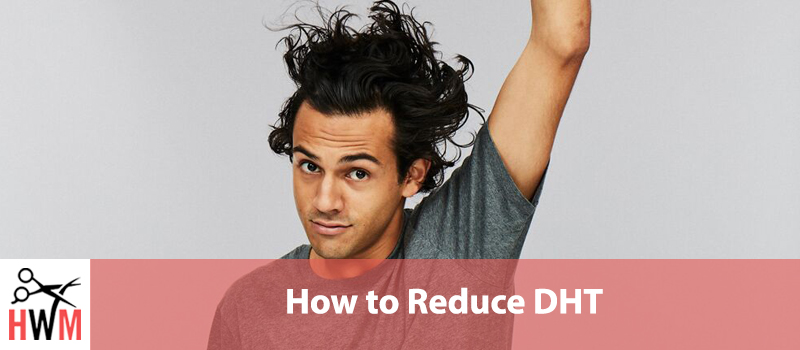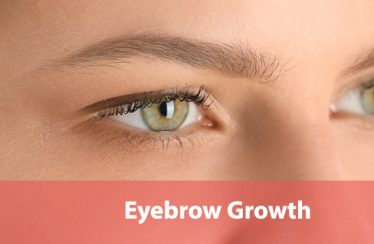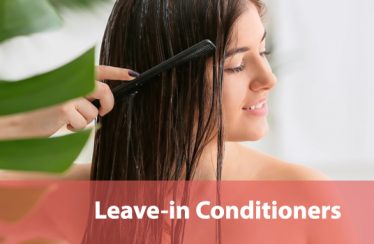Whichever way you look at it, hair loss can have a deep, existential impact on even the most unemotional men amongst us. At the first sign of a receding hairline, most of us will start worrying about male pattern baldness and what it means for our future.
The research comes next and that is where we come across the three letters that will come to define the rest of our lives – DHT. Even before we understand what DHT is or where it comes from, we’re told by hair experts and stylists online and offline that it is the root (all puns intended) cause of our hair loss problem. And, so begins our lifelong struggle against DHT.
We, with the help of this page, want to help you in this struggle because we know the heartbreak that is male pattern baldness. Moreover, we can’t even imagine what women suffering from pattern baldness could be feeling since their femininity is often associated with their hair.
While we’ll be catering to several concerns pertaining to DHT in this guide, our primary focus will be on the various methods of reducing it. Since we’ve covered a few subjects here, we give you the following quick-click navigation panel. It should help you skip topics that you’re not interested in and basically jump around the page on a whim.
- What is DHT?
- Why Should You Look to Reduce DHT?
- Is DHT All Bad?
- What are DHT Blockers and How Do They Help?
- Dietary Methods of Reducing DHT
- Using Supplements to Reduce DHT
- Lifestyle-Related Ways of Reducing DHT
- Picking Hair Products with DHT Blockers
- Artificial Ways of Reducing DHT
What is DHT?
DHT is an abbreviation for Dihydrotestosterone. It is a sex hormone that is derived from another sex hormone testosterone. The enzyme responsible for converting testosterone to DHT is called 5α-reductase or 5-alpha-reductase.
5α-reductase can be found all over the body across many tissues. It is important to note that it can be found in the oil glands of hair follicles too. As a result, DHT has the potential to accumulate in the scalp.
Rough estimates suggest that only about 10 percent of the testosterone is converted to DHT. However, even this relatively small amount can end up having a huge impact on how much hair you have. After all, pattern baldness is the primary cause of hair loss all across the world.
Why Should You Look to Reduce DHT?
As is common knowledge these days, excess DHT in the body is directly associated with male pattern baldness. Multiple studies have been conducted into the relationship between male pattern baldness and DHT, with the overwhelming majority finding a close correlation.
One study even found increased DHT levels in the bloodstream of people suffering from premature male pattern baldness.
Men with a family history of androgenetic alopecia or male pattern baldness are more sensitive to DHT than others. The DHT in their scalp bonds with the receptors in their hair follicles. This causes hair follicle miniaturization until the stunted follicle is unable to grow hair.
We should also add that excess DHT also has other side effects such as acne and prostate cancer. Therefore, while reducing DHT in your body will primarily help you stop or slow down male pattern baldness, it will also avert other medical conditions.
Is DHT All Bad?
DHT is produced naturally by the body because it is critical to many basic bodily functions.
For instance, the DHT in your body helps regulate blood sugar levels in your blood stream. In fact, it is so useful in this regard, that studies have found DHT to be very useful against both diabetes and hyperglycemia.
One study’s findings suggested that DHT is good for regulating sugar pathways in the body, while another found it to be a possible cure for diabetes. Increased DHT in the body has even been found to help against insulin resistance.
Other things that DHT helps with include memory, basic sexual functionality, sexual performance, cardiovascular stability, and even muscle mass. As is evident, you cannot subdue DHT completely in your body since it is critical to many bodily functions.
If you have excess DHT in your body, then, by all means, go ahead and work towards reducing it. However, it is possible that you have increased DHT sensitivity instead of excess DHT in your body.
In both scenarios, your solution will be the use of one or more DHT blockers.
What are DHT Blockers and How Do They Help?
DHT blockers are natural substances or artificial compounds that help against male pattern baldness in one of two ways. One is that they prevent DHT from being produced in the first place by interfering with the work of 5α-reductase. This results in a reduction in DHT content in the body.
The other action of DHT blockers is preventing DHT from binding with the receptors on the hair follicles. This keeps the process of hair follicle miniaturization at bay and prevents hair loss.
Therefore, some DHT blockers reduce DHT content in the body while others reduce the hair follicles’ sensitivity to DHT. Further, some DHT blockerscan perform both these actions to different degrees and will be effective against male pattern baldness.
There are two ways of applying DHT blockers. You can consume them orally or apply them topically.
If you want to consume them, you can either get them through naturally-occurring foods or specialized supplements. If you want to apply them topically, you can get them as ingredients of hair products such as shampoos, conditioners, serums, masks, and gels.
The following is a list of all the ways you can go about reducing DHT in your body.
Dietary Methods of Reducing DHT
 Changing your diet looks like an incredibly simple and effective way of reducing DHT, but for a lot of people, it is the most difficult. Changing dietary habits is no easy task, especially for people with extremely tight schedules, strong preferences, and a discerning palette.
Changing your diet looks like an incredibly simple and effective way of reducing DHT, but for a lot of people, it is the most difficult. Changing dietary habits is no easy task, especially for people with extremely tight schedules, strong preferences, and a discerning palette.
Even so, we will always recommend the natural option over artificial intervention. Fortunately, in this scenario, you don’t have to worry about how difficult it will be to adopt these foods. Most of them are easy to incorporate into your life. Consider.
Get More Lycopene
Lycopene is a naturally-occurring DHT blocker that works by reducing DHT in your body. It does this by restricting 5α-reductase from converting testosterone to DHT.
The easiest way to incorporate it into your diet is through tomatoes. While you may be tempted to eat more salads to incorporate tomatoes into your diet, don’t. Lycopene is best absorbed with cooked tomatoes. This means that you’ll be better off choosing pasta and curries over salads.
There are other food items that contain lycopene too. These include carrots, mangoes, and watermelons. If you like your salads, then these options would be far more suitable than tomatoes.
Eat More Zinc Containing Foods
Zinc is a DHT blocker that works in the same way as lycopene, i.e. restricting the function of 5α-reductase. It is such an excellent DHT blocker that you’ll find multiple hair products in the market with zinc on their list of ingredients.
A wide variety of food items contain zinc including meat, legumes, seeds, wholegrains, nuts, eggs, and even dairy. However, all of them have very small amounts of zinc. As a result, you may also want to consider zinc supplements.
Consume More L-Lysine
L-Lysine is a DHT blocker that works very differently from other DHT blockers. Instead of restricting 5α-reductase from converting testosterone to DHT or preventing DHT from binding with hair follicle receptors, it boosts the effectiveness of DHT blockers that are found naturally in our bodies.
Therefore, in a way, L-Lysine makes our bodies better able to deal with the side effects of excess DHT. Nuts of various types are the best sources of L-Lysine. These include walnuts, peanuts, almonds, and pecans, amongst others.
Manage Your Caffeine Intake
When it comes to reducing DHT, caffeine can be very helpful too. It is known to restrict the interaction between DHT and hair follicle receptors. One study even found the impact of caffeine as a DHT blocker being similar to minoxidil.
In fact, the study linked above showed that a 0.2% caffeine solution offers benefits comparable to what a 5% minoxidil solution delivers. However, caffeine’s benefits against hair loss don’t stop there. It is also proven to help hair growth in various ways.
However, the problem with using caffeine to reduce the effects of DHT is that you have to be very careful about quantities. While studies have shown that caffeine counteracts the effects of DHT, other studies have found that too much caffeine can actually boost hair loss instead of slowing hair loss.
Too much caffeine in the body can lead to dehydration and hormonal imbalances that can affect hair growth adversely. What’s worse is that it is impossible to determine how much caffeine you should have and how much you shouldn’t.
However, if you need to have a definite target, we believe that a couple of cups of caffeine-containing beverages wouldn’t lead to the side effects. You can try coffee, of course, but it is better to choose whole leaf teas such as green tea or black tea.
Whole leaf teas contain not only caffeine in its natural form but also various antioxidants that help against free radical damage in the body. Free radicals can also cause hair loss, so whole leaf teas offer a double benefit.
Avoid Sugar
Sugar doesn’t only make drinks and foods amazingly yummy, but it is also very addictive. Unfortunately, most Americans are victim of the addictive property of sugar.
High consumption of sugar, whether in the form of excessively processed drinks or through white foodstuffs, can result in a condition called insulin resistance. As the name suggests, insulin resistance describes a situation where our bodies become resistant to insulin.
The bodies’ response to this is to ramp up the production of insulin, which further fuels insulin resistance. Therefore, insulin resistance increases to a point where the body losesits ability to manage blood sugar levels altogether. Insulin resistance, when unchecked, leads directly to diabetes.
However, before that stage comes, insulin resistance causes our hair follicles to become increasingly sensitive to DHT. This association is a scientificallyproven fact. One study even found a direct correlation between insulin resistance, metabolic syndrome, and male pattern baldness.
Therefore, one of the easiest ways of reducing DHT, if you can resist the addictive nature of sugar that is, is to give up sugary drinks and white foods. You can simply replace sugary drinks with plain water and white foods like rice, bread, pasta, and cereals with unprocessed whole grains.
Using Supplements to Reduce DHT
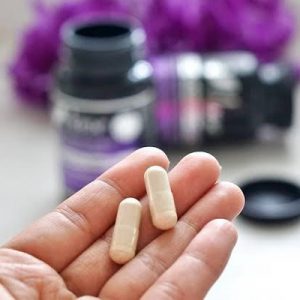 While changing your diet is the easiest and most long-lasting way of introducing DHT blockers to your body, a more direct route will be to take supplements built around naturally-occurring DHT blockers.
While changing your diet is the easiest and most long-lasting way of introducing DHT blockers to your body, a more direct route will be to take supplements built around naturally-occurring DHT blockers.
Even though these supplements aren’t completely natural (they’re extracts), they offer higher concentrations of the relevant DHT blockers. It is because of this reason that they’re not only more likely to deliver results but also do it much faster than dietary changes.
You’ll find supplements for a wide variety of DHT blockers and all of them will be effective to a certain extent, but we recommend the following. They’re known to be the most effective at countering DHT in the body.
Saw Palmetto
Saw palmetto is a naturally occurring DHT blocker that is scientifically proven to reduce hair loss caused by excess DHT in the scalp. Multiple studies have been conducted to explore the relationship between saw palmetto, DHT, and male pattern baldness.
One clinical trial correlated the use of saw palmetto directly with an improvement of 35 percentin hair growth. Another more elaborate study found that dietary intake of saw palmetto can be very effective in reducing DHT.
In the second study, participants were split into five groups. The first used a saw palmetto-based lotion, the second used a placebo lotion (without saw palmetto), the third used only a saw palmetto supplement, the fourth only used a placebo (no saw palmetto) dietary supplement, and the fifth used saw palmetto lotion and supplement both.
The group that used both the saw palmetto lotion and the supplement was found to have 50 percent more hair than other groups. Further, groups receiving saw palmetto in either its lotion or supplement form showed 20 to 30 percent improvement in hair growth.
Saw palmetto works against DHT by countering the effects of 5α-reductase. As a result, it slows down the conversion of testosterone to DHT. Estimates suggest that approximately 320mg of saw palmetto per day is enough to boost hair growth.
While its effects take much longer to become evident than artificial DHT blockers, it offers other benefits over the latter. The first is that it is a natural option while the other is that it is significantly cheaper than manmade DHT blockers.
Pumpkin Seed Oil
Pumpkin seeds work against DHT in the same manner as saw palmetto, i.e. by restricting 5α-reductase. They contain a steroid called delta-7 stearine that is responsible for its benefits.
While saw palmetto has a human clinical trial backing its efficacy, pumpkin seed oil is only supported by a study on rats. At the same time, though, pumpkin seed oil has far more anecdotal backing than saw palmetto. After all, it was used by ancient civilizations for dealing with hair loss and is a regular ingredient in alternative medicine.
In fact, it is also licensed as a treatment in the United States of America and Germany for prostate-related disorders. Since most prostate related problems are caused by excess DHT in the body, this can be seen as proof of pumpkin seeds’ DHT reducing properties.
The best way to reduce DHT with pumpkin seeds is to take an oral pumpkin seed oil supplement. It is also possible to incorporate whole pumpkin seeds into your diet by frying and flavoring them as snacks.
However, you’ll have to consume a lot of pumpkin seeds to get the amount of oil you need to counter the effects of DHT. Therefore, we recommend using supplements instead.
Stinging Nettle
Stinging nettle can also be used to reduce DHT. Like the previous two supplements mentioned above, stinging nettle also works by preventing 5α-reductase from converting testosterone to DHT. Stinging nettle’s efficacy against hair loss hasn’t been tested scientifically yet.
However, its effectiveness against 5α-reductase has already been proven, which is why we recommend stinging nettle supplements. Its effectiveness against 5α-reductase was proven in a study that focused on stinging nettle’s ameliorative effects against Prostatic Hyperplasia.
Since the main culprit behind Prostatic Hyperplasia is 5α-reductase, stinging nettle’s restricting effect against 5α-reductase is a scientifically proven fact.
Lifestyle-Related Ways of Reducing DHT
 If you are genetically predisposed towards male pattern baldness, i.e. if you have a family history of androgenetic alopecia, then this means that simple and basic lifestyle decisions can push you into the negative direction when it comes to the health of your hair.
If you are genetically predisposed towards male pattern baldness, i.e. if you have a family history of androgenetic alopecia, then this means that simple and basic lifestyle decisions can push you into the negative direction when it comes to the health of your hair.
It means that because you’re predisposed towards losing your hair, even the slightest of imbalances in your body can cause it to produce more DHT or make you more sensitive to normal levels of DHT. In other words, the wrong lifestyle decision, no matter how minor, can trigger the early onset of male pattern baldness.
However, genetic predisposition doesn’t mean fate. It is very much possible for you to rebalance your body and counter both the excess production of DHT and increased DHT sensitivity. You just need to make those lifestyle decisions that keep your body in balance.
Reduce Allergic Breakouts
Because modern society relies so heavily on processed foods, instances of allergic reactions, whether severe or minor, have gone up in recent decades. The most common allergic reactions are well-documented, ranging from skin breakouts to respiratory problems.
In fact, this is exactly what people imagine when it comes to allergies. However, these reactions are only the tip of the iceberg. What happens when the reaction isn’t so severe, i.e. your immune system hasn’t been completely compromised by the allergen in question?
The reaction is minor, namely an increased sensitivity to certain substances rather than a full-blown reaction. It is possible that you’ve been allergic to some substance, but haven’t realized it because the symptoms aren’t very strong or visible.
It is even possible that the symptom you’ve experienced is an increased sensitivity to DHT. Further, it is possible that the increased sensitivity you’ve experienced is delayed.
Delayed allergic reactions and increased sensitivities are real and very common in the masses. It’s just that most of us don’t realize what our bodies are going through.
The biggest problem with these kinds of reactions is that they’re hard to connect to the source of the problem, i.e. the food item. The only real way is to experiment with your regular diet.
To do this, you’ll have to keep a list of all the food items you normally eat and then start eliminating from your diet in two-week gaps. You’ll, of course, have to observe the impact on your hair and general body health as you do this too.
While tedious, this self-experiment is likely to not only reduce DHT in your scalp or reduce your sensitivity to it but also improve your overall health. People who have conducted this experiment on themselves have come out fitter, happier, and more content on the other side.
Do More Cardio
Virtually, every hair loss expert will tell you to exercise to slow down hair loss and increase hair growth. However, what most of them will forget to tell you is that the type of exercise you do is important if you want to reduce DHT.
There are two types of exercise regimes you can follow – weight training and cardiovascular training. In weight training, you will be lifting heavy weights to build muscle mass. Cardiovascular training, on the other hand, is about building stamina and agility instead of muscle development.
When it comes to DHT production in the body, these two types of fitness training are diametrically opposite. Weight training causes DHT and testosterone to spike, while cardiovascular training causes it to dip.
The reason is simple. To build muscle, the body needs testosterone and DHT. Therefore, when you do exercises designed to build muscle, you’re telling your body to produce more DHT.
In contrast, to burn fat or maintain existing muscles, the body needs to reduce DHT and focus on producing other hormones instead. Therefore, when you do cardiovascular exercises, you’re telling your body to reduce DHT production.
One of the best types of cardiovascular training regimes you can follow to reduce DHT is called HIIT or High-Intensity Interval Training. In HIIT, the objective is to have extended periods of intense cardiovascular exercises interspersed with short breaks to catch your breath. A good example of HIIT would be a series of sprints with a few seconds of rest in the middle.
While it has a direct impact on DHT, cardiovascular exercises indirectly contribute towards reducing DHT too. The following are their indirect benefits:
- Circulation: Exercises, especially cardiovascular exercises, increase circulation in the body. This includes circulation in the scalp. As a result, more nutrients reach the hair follicles in the scalp. This makes them stronger and more resilient. Over time, increased blood circulation will also revive dormant hair follicles. Better circulation also boosts quick removal of toxins and better distribution of DHT inside the body. As a result, there is no accumulation of harmful toxins or excess DHT in the scalp.
- Stress: It is a well-established fact that stress results in increased release of cortisol in the body. This can directly boost the production of DHT. In contrast, exercise is proven to relieve stress because it causes more production of serotonin, a happy hormone. Serotonin is the direct counter to cortisol and, hence, DHT.
- Protein Production: Exercise causes our bodies to go into overdrive. It forces every internal system to not only activate but also operate to its optimal levels. As a result, the rate at which new cells are produced in the body increase considerably. In fact, exercises bring a special focus on protein production in the body. Since hair is made up of a type of protein, exercising can counter hair loss and boost hair growth.
Find Ways to De-Stress
Stress increases the rate of hair fall as a study conducted in 2017 showed. In that study, researchers observed young women under stress because of a major exam and compared their findings with women not under the same scenario.
Therefore, de-stressing is one of the easiest and most effective ways of reducing DHT in your body. Apart from exercising which we’ve explored above, there are several other ways of reducing stress in your life.
The obvious method is to remove yourself from stressful situations, whether it is specific family dynamics or job-related challenges. However, since everyone doesn’t have the option of extricating themselves from stressful situations, reducing stress can also be helpful.
You can try taking up a sport, seek out more downtime at work, or even take more vacations. On a day to day basis, you can explore massages and other relaxing disciplines such as aromatherapy. Yoga is especially helpful in such scenarios since it combines relaxation with exercise.
Quit Smoking and Reduce Drinking
Drinking and smoking both cause an increase in DHT levels. Therefore, quitting smoking and reducing drinking can both have a positive impact on your efforts to reduce DHT in your body.
Statistically, testosterone and DHT levels have been found to be much higher in people who smoke, as explained in this study. Drinking alcohol boosts the production of DHT in indirect ways.
Instead of directly causing an increase in DHT, alcohol boosts those conditions in the body that cause DHT to increase. For instance, alcohol consumption is closely associated with incredibly unstable blood sugar levels.
This, as explained above, causes insulin resistance, which, in turn, results in higher DHT production as well as increased DHT sensitivity. Similarly, heavy alcohol consumption disrupts sleep and rest cycles. Lack of sleep and rest can result in increased stress levels, which, in turn, boost DHT production.
Picking Hair Products with DHT Blockers
 It is possible to reduce DHT levels in your scalp by changing the kind of hair products you use. However, changing hair products alone will not be very effective unless you use those products that have been specifically developed to counter DHT.
It is possible to reduce DHT levels in your scalp by changing the kind of hair products you use. However, changing hair products alone will not be very effective unless you use those products that have been specifically developed to counter DHT.
The idea is to give up hair products that contain harmful substances such as parabens, phthalates, sulfates, etc. and start using those that contain DHT blockers instead.
The best foot forward would be to make the dietary and lifestyle changes mentioned above, start taking DHT blocking supplements, and support those changes by choosing the right hair products. Consider.
Shampoos
The vast majority of DHT blockers we’ve mentioned on this page such as caffeine, zinc, saw palmetto, pumpkin seed oil, and stinging nettle can also be found in shampoos.
In fact, you’ll find multiple brands touting multiple products containing many of these ingredients and nutrients. These DHT blocking shampoos can be the perfect companion for your dietary and lifestyle-based efforts towards reducing DHT in your body.
Since hair loss is such a big concern for all of us here, we’ve studied many of these shampoos in details. As a result, we’ve found three that stand out.
The best of the three we’ve found is the PURA D’OR Original Gold Label Anti-Thinning Shampoo. This shampoo is truly exceptional when it comes to countering hair loss mainly because it is so effective at blocking DHT.
This shampoo’s anti-DHT action is not just great but excellent because it contains multiple DHT blockers. If you go through its ingredients list, you’ll find ingredients like nettle extract, pumpkin seed, saw palmetto, cedarwood, rosemary, Pygeum Bark, and even green tea.
These ingredients combine to make this one of the most potent DHT blocking shampoos available in the market today. However, this shampoo is great to use even if you ignore its DHT blocking properties.
It has multiple other benefits, such as promoting hair growth and countering dandruff. On top of this, this product offers everything you’ll ever need from a shampoo including the absence of artificial substances such as sulfates and parabens, a great tingling sensation, a superb smell, and even a lot of lather.
The problem with the PURA D’OR shampoo is that it falls in the mid-level price range. If you cannot spend so much, however, you can always consider the Biotin Shampoo for Hair Growth from Maple Holistics, which is one of the cheapest anti-DHT shampoo available in the market.
This shampoo’s anti-DHT properties come from its zinc content. Like the PURA D’OR shampoo, this one can also boost hair growth, smells nice, lathers well, and doesn’t contain parabens or sulfates. However, it isn’t as great for extra-sensitive people because it is too strong. Its strength, though, makes it a very effective cleanser.
In the premium market segment, our pick of the available options is Laritelle Organic Shampoo. Laritelle is a top-class anti-DHT shampoo that only contains ingredients that are certified organic by the authorities.
It is incredibly effective at countering hair loss and equally excellent at boosting hair growth. It gets it anti-DHT powers from multiple ingredients such as jojoba oil with its zinc content, rosemary oil, and cedarwood.
In terms of hair growth, this shampoo is so good because it offers benefits from ingredients such as argan oil, lemongrass, peppermint, and silk proteins.
Additionally, this shampoo has a unique woody smell and is completely organic. However, this means that it doesn’t lather so well. Since it is positioned in the premium segment, it is very much on the expensive side of things.
Hair Conditioners
Just like shampoos, you can use conditioners to supplement your efforts to reduce DHT. However, unlike shampoos, conditioners tend to be on the lighter side when it comes to their anti-DHT properties.
This happens because conditioners’ primary mandate is to moisturize the hair gently and many DHT blockers tend to be a little harsh. However, all this just means that the anti-DHT powers of conditioners are not as strong as those of shampoos.
If you’re making dietary and lifestyle-based changes along with using anti-DHT shampoos, then adding anti-DHT conditioners into the mix will only make the entire effort more likely to succeed. When it comes to anti-DHT conditioners, our favorite is the Pure Biology Premium Hair Growth Conditioner.
This conditioner will be extremely effective in supporting your anti-hair loss and hair growth endeavors since it contains the patented procapil blend of ingredients along with the hugely beneficial biotin. Additionally, it even offers protein in the form of keratin.
This conditioner’s anti-DHT properties are a result of the fact that it contains rosemary oil. In terms of its primary objective, i.e. moisturization, this conditioner is unbeatable. It contains ingredients like coconut oil, argan oil, and multiple vitamins to perform this task.
As its name suggests, though, it is definitely a premium-class conditioner, which means it is incredibly expensive. Therefore, it may not suit everyone’s financial capacity.
In case you want a pocket-friendly anti-DHT conditioner, then we suggest looking at ArtNaturals Argan Hair Growth Conditioner. It contains two of the strongest DHT blockers in the form of green tea and caffeine. Since it contains argan oil, keratin, and biotin too, it also manages to encourage hair growth in addition to blocking DHT.
Further, this is a hypoallergenic conditioner that has a distinct argan oil smell. It is free of parabens and sulfates both, but it is very strong when it comes to conditioning hair. This makes it unsuitable for people whose hair is already very oily.
Another great anti-DHT conditioner option that falls between these two in terms of cost is the Paisle Botanics re:line Biotin Hair Growth Conditioner. This conditioner is based on saw palmetto’s anti-DHT properties, which means that it is very strong against DHT.
It does well when it comes to moisturizing the hair as it contains coconut oil and castor oil. It nourishes hair too since it incorporates both biotin and keratin into the formula. This conditioner is best used in conjunction with the re:line hair growth shampoo as both of them have been developed to complement each other.
Styling Products
The more you introduce DHT blockers into your system, the more likely you’ll be to reduce DHT. To this end, we also think that you should start using styling products that contain DHT blockers.
After all, when you put gel or pomade in your hair, it stays there for the rest of the day. The time such styling products stay in your hair makes them ideal carriers for DHT blockers.
The best styling gel we’ve found that can also block DHT from ruining your perfect look is Nourish Beaute Hair Regrowth Treatment. This product is based on a patented blend of botanical ingredients called Redensyl.
Redensyl helps people with thinning hair in multiple ways. One of these ways is that it blocks DHT from forcing hair follicles into dormancy. Additionally, it contains jojoba whose zinc content supports Redensyl’s anti-DHT properties.
This gel also offers significant nourishment to hair since it contains silk amino acids, caviar, and tea tree. In fact, it is tremendous when it comes to growing hair. Further, it manages to hold and moisturize hair well through coconut oil, castor oil, and argan oil.
Moreover, this hair gel is completely odorless, so it will suit people with extremely sensitive nosesas well. This gel’s only problems are that it is very expensive and slow acting.
Two much faster and cheaper alternatives are ORS HAIRestore Fertilizing Temple Balm and Strong HairPro Hair Styling Gel. Both these styling gels are very effective against DHT, although the ORS Balm rates better overall.
The ORS Balm’s formula is simplicity itself. It is based on two ingredients which are extremely good DHT blockers. The ingredients this product is based on are nettle leaf and horsetail extract. The presence of these ingredients makes the ORS Balm nothing short of phenomenal when it comes to reducing DHT.
In fact, the ORS product is one of the best styling gels you can use. It manages to stop or at least slow down hair loss in everyone, smells glorious, and even makes the scalp tingle. It is also suitable for all types of hair and is especially a favorite of the African American community.
The Strong HairPro Styling Gel is slightly different in the sense that it relies on three patented blends for its anti-DHT properties in the form of Procapil, Capixyl, and Redensyl.
The approach is different here, but successes are similar. This styling gel is as effective at reducing DHT as any other styling gel, pomade, or wax available in the market.
Also, it contains two other patented blends which boost hair growth. These are Keravis and Phytelene EGX 292. All the patented blends it contains have been developed after elaborate studies and clinical trials. Therefore, their efficacy is beyond debate.
The Strong HairPro gel is also odorless,making it ideal for those of you who don’t want their hair to have a distinct smell. Its greatest flaw is that it doesn’t offer a very strong hold. At the same time, it does tend to last a really long time, though.
Artificial Ways of Reducing DHT
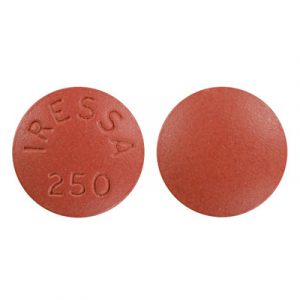 While we will always recommend natural methods of reducing DHT, sometimes the problem is so severe that natural methods don’t deliver results quickly enough.
While we will always recommend natural methods of reducing DHT, sometimes the problem is so severe that natural methods don’t deliver results quickly enough.
Whether your problem is too serious or you don’t like to wait a long time for results, the point is moot because the best option for you is to use artificial methods of reducing DHT.
However, before we tell you what these methods are, we must warn you while these methods deliver smashing results, both of them have their side effects. Even so, they’re both approved by the FDA and very much legal. We’re, of course, talking about finasteride and, to a certain extent, minoxidil.
Finasteride is one of the most potent DHT blockers in the world right now. It is more popularly known by two of its most prevalent brands – Propecia and Proscar.
It is so excellent in reducing DHT because it prevents the body from converting testosterone to DHT in the first place. It does so by interfering with the function of 5α-reductase.
Finasteride is a hair loss drug that was first created for an entirely different purpose. It was intended as a cure for Prostatic Hyperplasia. However, studies soon revealed its positive impact in reducing DHT in the body too. The discovery wasn’t very surprising for the medical community because Prostatic Hyperplasia is also caused by excess DHT or increased DHT sensitivity.
Estimates show that finasteride is easily the most effective method for controlling DHT. For instance, one study showed that if a person takes about 1mg of finasteride per day for 42 days, then he can expect a reduction of about 64 percent in DHT in his scalp.
In practice, however, most people have to wait for up to four months to see a visible difference in their hair. Finasteride is an incredibly powerful drug, which is why it is never released to an individual without a proper prescription.
Therefore, if you want to try finasteride, you’ll have to consult a medical practitioner. Finasteride is a prescription drug because its misuse can cause significant side effects. Its biggest problem is that it can cause hormonal imbalances leading to various sexual dysfunctions.
You should also know that finasteride’s benefits last only until the drug is active. This means that when a person stops taking finasteride, DHT concentration in the scalp returns to earlier levels or even higher.
As great as finasteride is in countering DHT and boosting hair growth, studies have found a better alternative – using finasteride in combination with minoxidil.
According to the study linked above, the combination of finasteride and minoxidil is the most effective way of reducing DHT. On a standalone basis, though, finasteride remains more effective than minoxidil.
Minoxidil, like finasteride, is also a hair loss drug. However, it is much older than finasteride. Minoxidil was first developed halfway through the 20th century as a cure for ulcers. Unfortunately, when tested, it proved to be ineffective against ulcers.
At the same time, minoxidil was discovered to be very effective at dealing with hypertension. As various studies proved its efficacy further, the FDA approved minoxidil as a hypertension treatment.
With regular use of minoxidil, the medical community discovered that it boosts hair growth by improving blood flow in the scalp. As a result, it got FDA’s approval for hair loss a decade or so later.
Minoxidil, luckily, isn’t a prescription drug. Once you get a prescription for finasteride, you can easily buy 2% minoxidil over the counter. Even so, we do suggest consulting a doctor before using these two drugs together.
